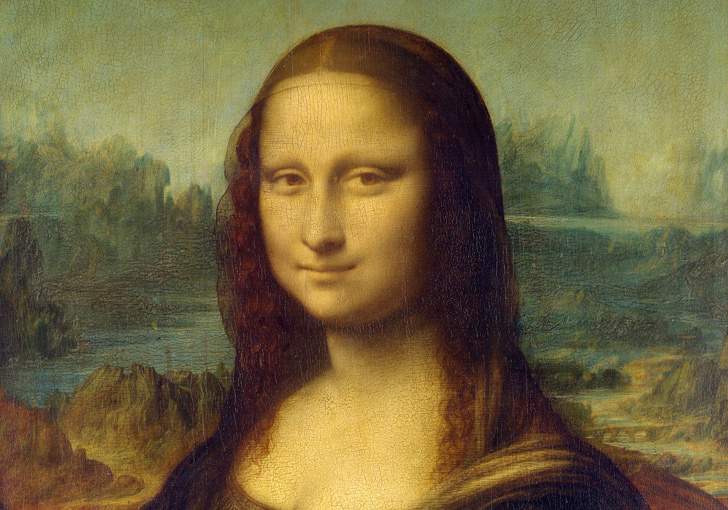Admired and contemplated, investigated and copied, studied and stolen, Leonardo da Vinci ’s Mona Lisa and her smile so mysterious, centuries later, continue to intrigue. What does this portrait of Mona Lisa reveal to us? Why is this painting the best known in the world? The Grand Palais Immersif and the Louvre are proposing to rediscover this masterpiece through La Joconde, an immersive show created with the scientific advice of Vincent Delieuvin, chief curator of 16th-century Italian painting at the Louvre Museum, scheduled from March 10 to August 21, 2022, at the Palais de La Bourse in Marseille. The show, with large-format projections that move to the rhythm of the passages, innovative interactive processes, leads visitors into the heart of this mythical portrait.
La Joconde offers a journey into Leonardo da Vinci’s masterpiece through stories and sensory experiences that are articulated at different levels: the walk is punctuated by contact with the “skin-landscape” that envelops the entire exhibition space and immerses visitors in a place inspired by the works of Leonardo da Vinci (1452 - 1519) such as the Mona Lisa, the Virgin of the Rocks, or the St. Anne, with the possibility of interactions. Different visual narratives tell the stories, intrigue, contemporaneity, and process that led to the birth of the icon that the Mona Lisa has become.
The audience thus travels through visual narratives intended to be both educational and contemplative. Six large-format digital projections evoke the polysemy of Leonardo da Vinci’s work. Interactive devices narrate with the aim of engaging the visitor who can “touch” these digitized works, manipulate them, observe their grain and minute details.
La Gioconda, a universal icon: the portrait of Mona Lisa is one of the few images that is truly universal today. It continues with The Mona Lisa Was Stolen: or how the world’s most famous painting was stolen and found in Florence before being returned to the Louvre after a tour of Italy. The third chapter is The Mona Lisa, Copied, Never Equaled, which investigates how up to the 19th century many painters paid homage to Leonardo da Vinci’s composition (since its creation, the Mona Lisa has been copied and imitated: the painting had just been finished when the young Raphael found the Mona Lisa a powerful source of inspiration for his own work. It was then used for many portraits of women and men from all over Europe for centuries.
We continue with The Mona Lisa and the Art of Portraiture: like other painters before him, Leonardo da Vinci places his character in front of a landscape. If the Italian tradition until then privileged the profile position, in Northern Europe the privileged view is three-quarters and the gaze turns to the visitor. The framing offers the view of hands coming to life. Above all, the master chose to paint Mona Lisa with an expression that few artists before him had dared to depict: a smile. Leonardo da Vinci was thus inspired by other painting traditions, particularly Flemish painting. But because he was able to render the life of his model like no one else before, he created a masterpiece that still fascinates us five centuries later. The fifth chapter is The lower part of the work: the impression of extraordinary reality emanating from the Mona Lisa derives from Leonardo da Vinci’s painting technique: by blurring the lines of the contours, all the elements of the painting seem to be a single body. For him, shadows and lights must merge into each other and be lost “like smoke.” Thus, he invents the pictorial effect known as sfumato. It is for the artist the culmination of his research work and scientific observation of the world.
Finally, the last chapter of the path: A painter and his model. During his lifetime, Leonardo da Vinci made several portraits. In his drawings, notebooks or painting, he tried to figure out how to represent, in all its complexity, life. Painted life-size, the Mona Lisa seems to be for its creator the most faithful representation of his quest. Leonardo da Vinci never gave his patron, Francesco del Giocondo, the portrait of his wife: he kept it jealously close to him until his death, constantly perfecting it. It was at this price that he was able to create life on a poplar board, to the point that his contemporaries “trembled” at this miracle.
These are the exhibition hours: closed Mondays and Tuesdays in March and April. Nightly on Fridays until 10 p.m. Closed on holidays.
 |
| In Marseille, the Mona Lisa is the focus of an immersive show to enter the painting |
Warning: the translation into English of the original Italian article was created using automatic tools. We undertake to review all articles, but we do not guarantee the total absence of inaccuracies in the translation due to the program. You can find the original by clicking on the ITA button. If you find any mistake,please contact us.